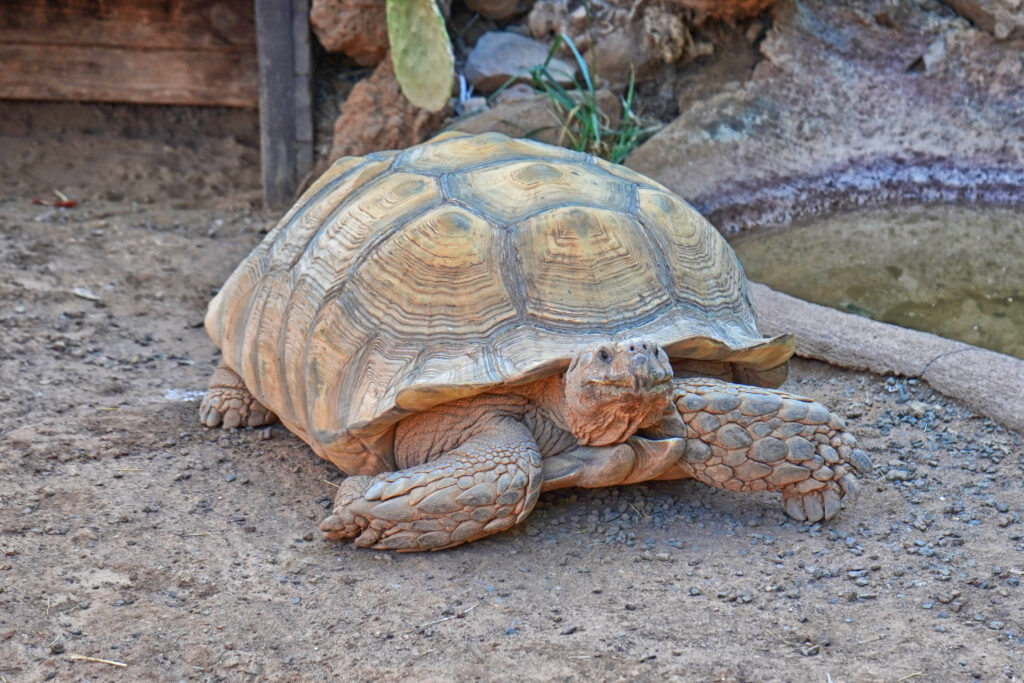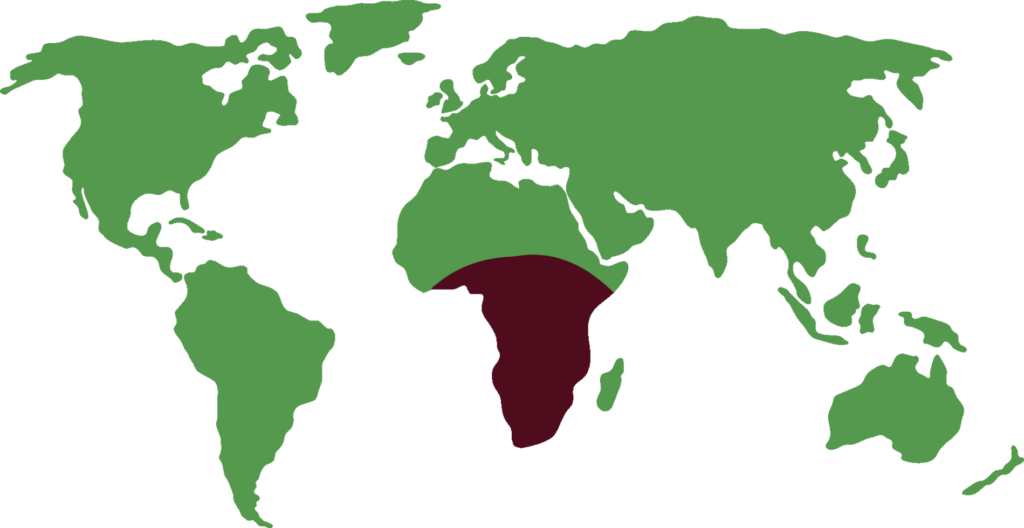AFRICAN SPURRED TORTOISE
Centrochelys sulcata

Length

80 cm
weight

100 kg
Lifespan

100 years
The African spurred tortoise, also called the sulcata tortoise, is a species of tortoise unique in its genus Centrochelys. It is the third largest species in the world after the Galapagos tortoise and the giant Aldabra tortoise.
General characteristics
The shell of the sulcata tortoise is large and heavy. It has a saddle-shaped design and is brown in color with deep lines dividing it into sections. Its various names refer to the grooves in the scales and spurs on its hind legs.
Keeping with its size, the head is also large and broad, and has a strong, sharp beak used for biting and cutting vegetation. The legs, on the other hand, are short and adapted for walking on rocky and sandy desert soils.
Feeding
They are mostly herbivorous. They eat a variety of plants, flowers and fruits. Their general diet should be high in fiber and very low in protein, as too much protein will cause the tortoise to grow too fast.
Behaviour
Sulcata tortoises are solitary and territorial animals in the wild. They generally do not interact much with other members of their species, except during mating season. However, in captivity, sulcata tortoises can be more social and tolerant of other tortoises.
In arid regions, these tortoises dig burrows in the ground to reach areas with higher levels of humidity and spend the hottest hours of the day in these burrows.
Burrows can be more than 75 cm deep, and some excavate tunnel systems more than 3 meters underground.
Reproduction
They reach sexual maturity when the carapace measures approximately 35-40 cm in diameter. They are especially aggressive during the breeding season, which is usually after the rainy season. Males chase the females with blows on their shells and emit loud sounds.
Females deposit eggs in holes dug by themselves. Each clutch can have up to 15 eggs and the incubation period varies from 90 to 200 days.
Threats
They are threatened mainly by the urbanization of their habitat, desertification and the extension of agricultural activities. In addition, in some local populations, they are used as food and traditional medicine.
Distribution
It is native to the southern edge of the Sahara desert in Africa. It lives in savannahs, acacia forests and arid and dry areas.

Did you know?
They use their tails to store water during periods of drought.
These turtles grow very fast. Every three years they double their size.
In the wild, their main cause of death is not being able to straighten up after being flipped over on their backs.
Conservation status
